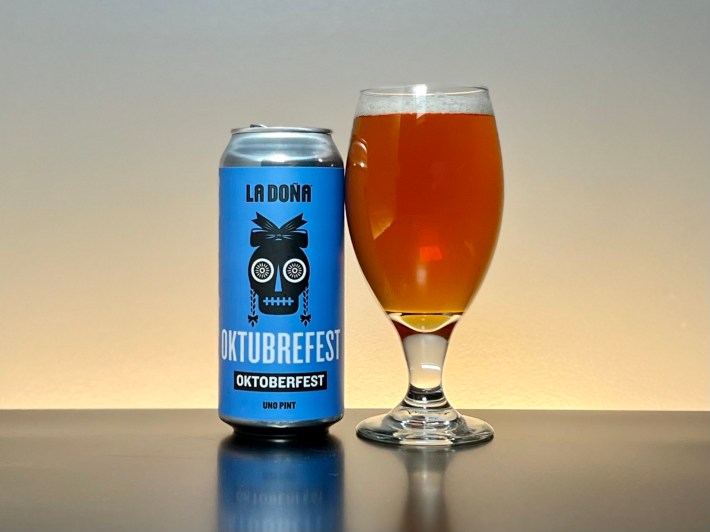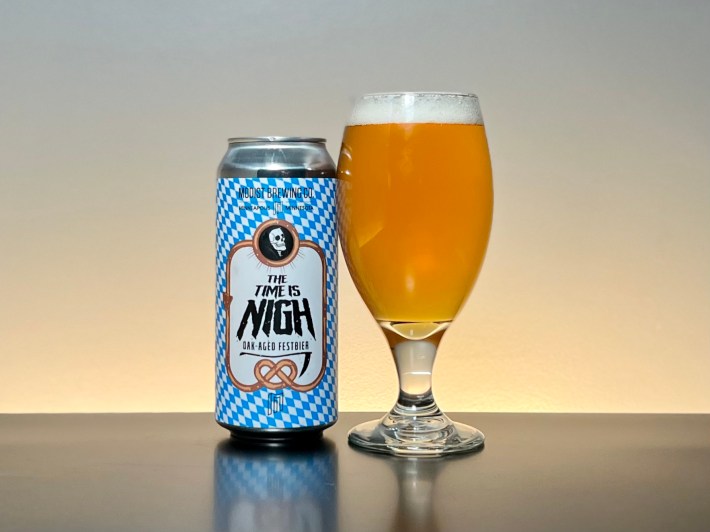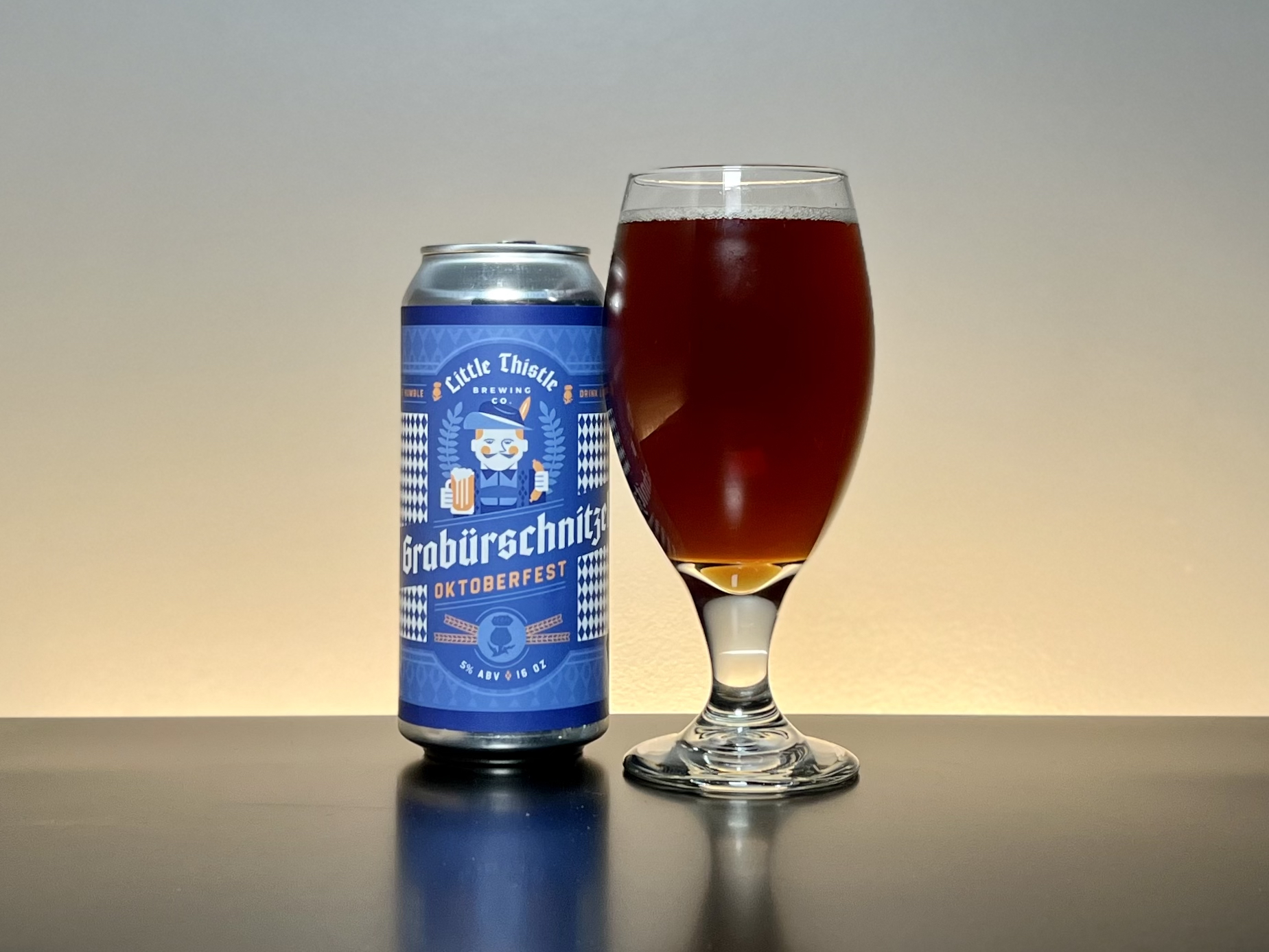A few weeks ago, before I'd even finished writing August’s wheat beer-focused column, I started noodling on what I'd write about in September. It didn’t take long before I landed on the most obvious answer: Oktoberfest lagers. Duh. They're the quintessential late September to early October beer choice, and serve as a perfect segue into the darker and maltier styles common in the fall and winter. Also, almost every brewery brews one, so it’s not hard to find them.
That last bit seemed like a huge benefit. However, it also created a problem: How was I supposed to decide which ones to try? And, isn’t that, kinda… my job? Isn’t that why you read this loose collection of jokes masquerading as a beer column? To have someone tell you which beers you should try?
So, I dug in, put my money where my mouth is—literally—and tried every Oktoberfest beer I could find. The final total was 19 beers, and cost more than I get paid for this column. I think it was worth it. However, I suppose the final judgment on that is up to you, my dear FWBs (friends with barley).
Little Thistle Brewing Co.: Grabürschnitzel
Märzen / 5.0% ABV / 12 IBU
Märzen lagers are practically synonymous with Oktoberfest. They were traditionally brewed in March (Germans are known for their creativity; “März” is the German word for “March”), and “lagered” in caves throughout the summer. By the time Oktoberfest rolled around, people were practically begging for the malty fall vibes märzen is known for. Think of it as the pumpkin spice latte of the German beer scene.
Little Thistle's Grabürschnitzel is a great example of the style. Clean malt quickly transitions to toasted bread with a nice, even bitterness. Unlike some märzens, this one doesn’t really build on the palate as much—making it much more drinkable. Little Thistle’s Untappd claims it has notes of caramel and toffee, but outside of a little on the nose, I’m not getting it. And that’s fine! Probably a good thing, even. Most breweries go too hard on the malt for their märzens.

Drastic Measures Brewing: Drasticfest
Festbier / 6.0% ABV / 12 IBU
While märzen is the “traditional” Oktoberfest lager, festbier is the more common choice in Germany for Oktoberfest itself these days. And it makes sense—festbiers tend to be lighter, less sweet, and more balanced overall. Which, when you’re drinking out of 1-liter steins, is definitely appreciated.
This one is a great example of the style, balancing out light malt with what comes across as a mild “noble hop” bitterness. What the heck is a noble hop? Well, depending on who you ask, you might get slightly different answers. Hop gender is a social construct, after all. However, generally speaking, there’s four “traditional” noble hops: Hallertauer Mittelfrüh, Tettnang, Spalt, and Saaz. They’re strongly associated with traditional lagers produced in Europe, and they tend to skew toward earthy, woody, herbal, and spiced notes. But like, that’s not me trying to limit them, or tell them who to be, you know? You know. You get it. We’re all hop gender allies here.
P.S. I’m sorry, Wadena, Minnesota, for not knowing you existed until I drank this beer. You exist. You definitely exist. Don’t let anyone tell you different.

La Doña Cervecería: Oktubrefest
Oktoberfest / 5.9% ABV / 20 IBU
“Oktubrefest” is a brilliant name for a Latin-oriented brewery’s Oktoberfest beer. A+, well done. And here’s what's cool—that’s literally the least interesting thing about this beer. La Doña put its own spin on Oktoberfest by throwing a healthy bit of rye into this, and the result is truly beautiful. It’s medium bodied, with a bit of malt and toast, and a nice rye spice finish. The nose likewise comes across very “rye bread.” All this together means the overall vibe is just perfect for early fall in Minnesota. Put down that Pumpkin Spice Latte. This right here is what we should all be excited about drinking going into fall.
“But Nissa, I don’t like rye in beer!” No. Shut your mouth. That’s your fixed mindset talking. Try, try, rye again. I promise it’s worth it, and there’s no better beer to learn to love it with.

Luce Line Brewing Co.: Schnapsidee Oktoberfest
Märzen / 5.7% ABV / 25 IBU
Caramel colored, with moderate malt skewing a bit bready (from the Munich malt used), and a bit toasty. The Perle, a “recent” German hop variety that some consider noble-esque, and Tettnang hops Luce Line chose to use do a great job of balancing it all out. This is a very classic märzen, executed very well. If you’re going to go the traditional route and eschew some of the lighter and more easily quaffable-in-bulk festbiers, this is a great place to start.
Also, other breweries note: Luce Line provides info on grains used, hops, etc., right on the label. This makes nerds like me intensely happy, because then we can go “looking” for those things. This is something all of y’all ought to do more of. A+ to Luce Line. I appreciate your commitment to beer nerdery.

Modist Brewing Co.: The Time Is Nigh
Oak-aged Festbier / 5.2% ABV / ? IBU
Oak aging used to be a thing reserved for high-ABV beers that could stand up to the additional flavor imparted by the oak. But, a while back, folks figured out that the woody vibes of oak aging actually pair really well with light lagers—particularly those that use noble hops or hops in that general earthy vibe direction. Oak-aged pilsners for example, which Modist also does a good job with, are not that uncommon.
However, this beer is the first time I’d seen the idea applied to a festbier. And it works! It works really well! This beer is on the lighter end of the festbier spectrum. I’d almost call it a demi-pilsner. The oak blends very well into the hops, making it hard to distinguish where one ends and the other begins. There’s malt here, rounding out the beer, but it’s not dominant. If you stubbornly refuse to allow fall to pull you into its warm, malty embrace, maybe you could shack up with this handsome fella for a bit. You know, at least until porter weather comes around.







